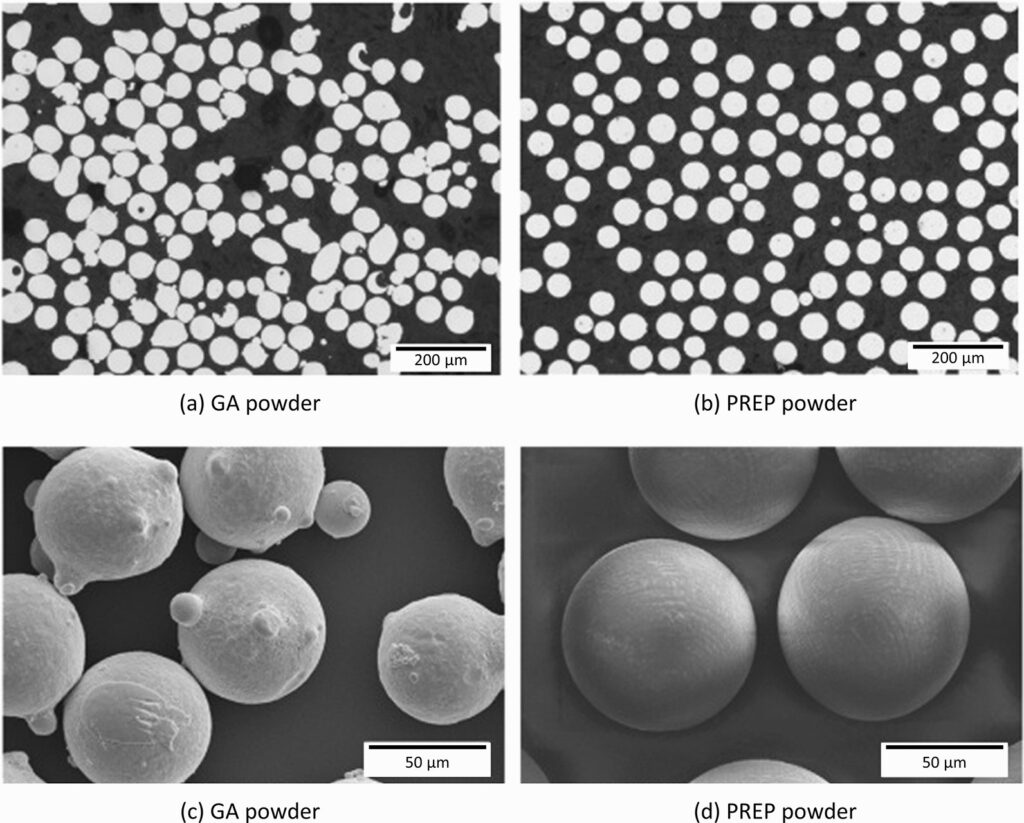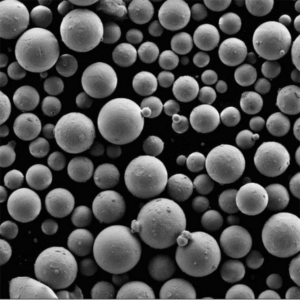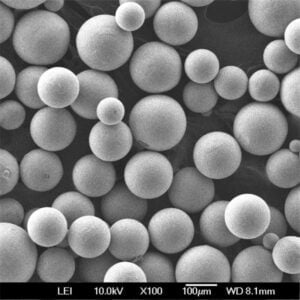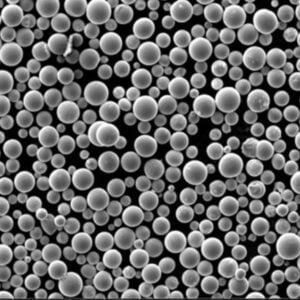
Sfäriskt legeringspulver med hög entropi: Ett genombrott för precisionsteknik
Låg MOQ
Tillhandahålla låg minsta orderkvantitet för att möta olika behov.
OEM & ODM
Tillhandahålla kundanpassade produkter och designtjänster för att tillgodose unika kundbehov.
Tillräckligt lager
Säkerställa snabb orderhantering och tillhandahålla tillförlitlig och effektiv service.
Kundtillfredsställelse
Tillhandahålla högkvalitativa produkter med kundnöjdhet i fokus.
dela denna artikel
Innehållsförteckning
I den ständigt föränderliga världen av materialvetenskap, spherical high-entropy alloy (HEA) powders are one of the most exciting innovations in recent years. These multi-component alloys, which often contain five or more principal elements in near-equal atomic ratios, offer superior mechanical properties, high strength, wear resistance, and exceptional thermal stability. If you’re involved in industries like additiv tillverkning, flyg- och rymdindustrin, eller Fordonsteknik, you’re probably already thinking about how these powders can transform your production processes.
Men vad är det egentligen som gör sfäriskt legeringspulver med hög entropi så speciellt? Hur står det sig i jämförelse med traditionella material som rostfritt stål, titanlegeringar eller nickelbaserade superlegeringar? Och kanske ännu viktigare, hur kan du använda det för att ge dina projekt en konkurrensfördel?
I den här omfattande guiden dyker vi djupt in i världen av spherical high-entropy alloy powder-its sammansättning, fastigheter, tillämpningar, prissättning, and much more. Stick with us, and by the end, you’ll have all the information you need to decide if this cutting-edge material is the right fit for your next project.
Overview: What is Spherical High-Entropy Alloy Powder?
Låt oss börja med grunderna. High-entropy alloys (HEAs) are a relatively new class of materials that differ from traditional alloys in their composition. Instead of having one or two primary elements, HEAs consist of five or more elements mixed in (nearly) equal proportions. This unique composition results in unparalleled material properties, including high strength, excellent corrosion resistance, and remarkable thermal stability.
But why the spherical shape? In advanced manufacturing processes like additiv tillverkning (AM) or 3D-utskrifter, the shape of the powder particles matters a lot. Sfäriska pulver ensure better flowability, packing density, and layer uniformity—all of which are essential for precision manufacturing.
Key Features of Spherical High-Entropy Alloy Powder
- Multi-component composition: Typically containing five or more elements in near-equal proportions (e.g., Fe, Ni, Cr, Co, Ti).
- Exceptionella mekaniska egenskaper: High strength, hardness, and excellent wear resistance.
- Termisk stabilitet: Performs well in high-temperature environments, maintaining structural integrity.
- Korrosionsbeständighet: Resistant to oxidation and corrosion in harsh environments.
- Sfärisk form: Enables superior flowability and packing density, critical for additiv tillverkning.
- Mångsidighet: Used across industries like flyg- och rymdindustrin, fordonsindustrin, energi, och Medicinsk.
Types, Composition, and Properties of Spherical High-Entropy Alloy Powder
While all high-entropy alloys share the characteristic of having multiple principal elements, the exact sammansättning och fastigheter can vary widely depending on the specific alloy system. Let’s explore the different types of HEA powders, their composition, and the mechanical properties that make them stand out.
Types and Composition of Spherical High-Entropy Alloy Powder
| Typ | Typisk sammansättning | Primära tillämpningar |
|---|---|---|
| Cantor Alloy (CoCrFeMnNi) | Co, Cr, Fe, Mn, Ni (equimolar ratio) | Aerospace, automotive, corrosion-resistant components |
| AlCoCrFeNi | Al, Co, Cr, Fe, Ni | High-temperature applications, power generation, turbines |
| FeCoCrNiMo | Fe, Co, Cr, Ni, Mo | Slitstarka beläggningar, miljöer med höga påfrestningar |
| TiZrHfNbTa | Ti, Zr, Hf, Nb, Ta | Biomedical implants, aerospace components, cryogenic materials |
| AlTiVCrFe | Al, Ti, V, Cr, Fe | Lightweight structures, high-strength components |
Each of these high-entropy alloys offers a unique combination of properties that makes them suitable for different applications. For example, Cantor alloys är kända för sina utmärkt korrosionsbeständighet, medan AlCoCrFeNi alloys are prized for their stabilitet vid höga temperaturer.
Physical and Mechanical Properties of Spherical High-Entropy Alloy Powder
| Fastighet | Typiskt värde |
|---|---|
| Täthet | ~6.5 to 8.5 g/cm³ (depending on composition) |
| Smältpunkt | 1,200°C to 1,600°C |
| Hårdhet (Vickers) | 300 to 600 HV |
| Draghållfasthet | 1,000 to 1,500 MPa |
| Termisk konduktivitet | 5 to 15 W/m·K |
| Elasticitetsmodul | 150 to 220 GPa |
| Motståndskraft mot korrosion | Excellent in seawater and aggressive chemical environments |
| Oxideringsbeständighet | High, especially at elevated temperatures |
Den mekaniska egenskaper of spherical high-entropy alloy powders are heavily influenced by their multi-component composition, which allows these materials to perform well in hög stress och hög temperatur environments. For instance, the draghållfasthet of HEA powders can easily surpass that of conventional materials like stainless steel or titanium, making them ideal for kritiska tillämpningar i flyg- och rymdindustrin eller fordonsindustrin industrier.
Applications of Spherical High-Entropy Alloy Powder
De unika egenskaperna hos spherical high-entropy alloy powder make it highly versatile, with applications across a wide range of industries. Let’s dive into some of the most common uses for this advanced material and why it’s gaining traction in high-tech manufacturing processes.
Key Applications of Spherical High-Entropy Alloy Powder
| Industri | Tillämpning | Why HEA Powder? |
|---|---|---|
| Flyg- och rymdindustrin | Turbinblad, motorkomponenter, strukturella delar | Högt förhållande mellan styrka och vikt, utmärkt termisk stabilitet |
| Additiv tillverkning | 3D-utskrift av komplexa geometrier | Superior flowability, high packing density, and excellent layer uniformity |
| Medicinsk | Biomedical implants, prosthetics | Biocompatibility, corrosion resistance, and high mechanical strength |
| Fordon | Lightweight engine parts, high-performance exhaust systems | High strength, excellent wear resistance, and heat tolerance |
| Energi | Power generation components, nuclear reactors | Exceptional thermal stability and corrosion resistance |
| Verktyg | Skärande verktyg, slitstarka beläggningar | Hög hårdhet, slitstyrka och förlängd verktygslivslängd |
Example: High-Entropy Alloys in Aerospace Applications
I flyg- och rymdindustrin, weight savings and mechanical performance are critical factors. Spherical high-entropy alloy powders are increasingly being used to manufacture engine components, turbine blades, and structural parts because they offer a superior styrka/vikt-förhållande compared to traditional materials like superalloys. Additionally, their oxidationsbeständighet and ability to perform at high temperatures make them a perfect fit for turbinblad, which need to withstand extreme conditions without losing integrity.
Specifications, Sizes, Grades, and Standards for Spherical High-Entropy Alloy Powder
När du väljer spherical high-entropy alloy powders for your project, it’s important to be aware of the available Specifikationer, storlekar, och betyg. Different applications may require different particle sizes or compositions, and ensuring your material meets the necessary standards is crucial for performance and safety.
Common Specifications and Grades of Spherical High-Entropy Alloy Powder
| Specifikation | Värde |
|---|---|
| Renhet | 98.0% – 99.9% (depending on alloy type) |
| Partikelstorlek | 10 µm till 100 µm (varierar beroende på applikation) |
| Flytbarhet | Utmärkt för användning vid pulverbäddsfusion och laserpulverbäddsfusion |
| Packningstäthet | High, ensuring uniformity in additive manufacturing processes |
| Standarder | ASTM B243, ASTM F3302 (Additive Manufacturing), ASTM B212 (metal powders) |
| Betyg | Different grades based on elemental composition (e.g., AlCoCrFeNi, TiZrNbMoTa) |
Tillgängliga storlekar och former
Den Partikelstorlek of the powder is crucial for determining its suitability for different manufacturing processes. For example, mindre partiklar är idealiska för additiv tillverkning eller fusion av pulverbäddar, medan större partiklar kanske passar bättre för pulvermetallurgi processes that require high packing density.
| Storleksintervall | Tillämpning |
|---|---|
| 10-20 µm | Tunna filmer, ytbeläggningar, elektronik och mikrostrukturer |
| 20-45 µm | Additiv tillverkning, laserpulverbäddfusion, finpulvermetallurgi |
| 45-100 µm | Komponenter för flyg- och rymdindustrin, storskalig 3D-printing, pulvermetallurgi |
Standards for Spherical High-Entropy Alloy Powder
It’s essential that Sfäriska HEA-pulver meet the relevant branschstandarder, especially for use in critical industries like flyg- och rymdindustrin och medicintekniska produkter.
- ASTM F3302: Standard for additive manufacturing of metallic components.
- ASTM B243: Standard terminology for powder metallurgy.
- ASTM B212: Standard test method for density of metal powders.
Suppliers and Pricing of Spherical High-Entropy Alloy Powder
Prissättning för spherical high-entropy alloy powder kan variera beroende på faktorer som renhet, sammansättning, Partikelstorlek, och produktionsmetod used. As a relatively new material, HEA powders are generally more expensive than traditional materials, but their performance advantages can offset the cost in high-tech applications.
Suppliers of Spherical High-Entropy Alloy Powder
| Leverantör | Plats | Tillgängliga betyg | Pris per kg (ungefärligt) |
|---|---|---|---|
| Amerikanska element | USA | Cantor alloys, AlCoCrFeNi, TiZrNbMoTa | $500 – $2,500 |
| TLS Teknik | Tyskland | High-purity HEA powders for additive manufacturing | $600 – $3,000 |
| Goodfellow | STORBRITANNIEN | Cantor alloy, Ti-based HEA powders | $700 – $2,800 |
| Avancerade eldfasta metaller | USA | High-purity HEA powders, multi-component alloys | $550 – $2,700 |
| Stanford Avancerade Material | USA | AlCoCrFeNi, Ti-based HEA powders | $600 – $3,200 |
Factors Affecting the Price of Spherical High-Entropy Alloy Powder
Flera faktorer påverkar kostnaden för spherical HEA powder:
- Renhet: Higher purity powders are more expensive due to the additional processing required.
- Legeringens sammansättning: Complex alloys with more exotic elements like tantal eller hafnium tenderar att bli dyrare.
- Partikelstorlek: Finer powders require more advanced production techniques, which drives up the price.
- Produktionsmetod: Metoder som gasatomisering eller sfäroidisering av plasma ensure high-quality powders, but they also add to the cost.
- Bulk Purchasing: As with most materials, buying in larger quantities can help reduce the overall cost per kilogram.
Advantages and Limitations of Spherical High-Entropy Alloy Powder
Medan spherical high-entropy alloy powder offers many benefits, it’s important to consider both the Fördelar och Begränsningar to determine whether it’s the right material for your specific application.
Advantages and Limitations of Spherical High-Entropy Alloy Powder
| Fördelar | Begränsningar |
|---|---|
| Högt förhållande mellan styrka och vikt: Ideal for lightweight, high-strength components | Kostnad: High-entropy alloys are generally more expensive than traditional materials |
| Termisk stabilitet: Fungerar bra i miljöer med höga temperaturer | Produktionens komplexitet: HEA powders require advanced manufacturing techniques |
| Motståndskraft mot korrosion: Excellent in aggressive environments | Begränsad tillgänglighet: High-quality HEA powders may be harder to source |
| Slitstyrka: Ideal for high-wear applications like cutting tools | Svårighet att bearbeta: Kräver specialutrustning för additiv tillverkning |
| Mångsidighet: Lämplig för ett brett spektrum av industrier och applikationer | Forskningsstadiet: Some HEAs are still in the experimental phase, limiting their commercial use |
Till exempel, medan spherical HEA powder är ett idealiskt material för flyg- och rymdindustrin och medicinska implantat på grund av dess hög hållfasthet och termisk stabilitetkanske det inte är det bästa valet för fler Kostnadskänsliga projekt där billigare material som stål eller aluminium kan räcka.
Spherical High-Entropy Alloy Powder vs. Other Materials
När man avgör om spherical HEA powder is the right material for your project, it’s essential to compare it to other common materials like titanlegeringar, aluminium, och rostfritt stål. Let’s explore how HEA powders stack up against these materials in terms of performance, cost, and applications.
Comparison of Spherical High-Entropy Alloy Powder with Other Materials
| Material | Viktiga egenskaper | Kostnadsjämförelse | Vanliga tillämpningar |
|---|---|---|---|
| High-Entropy Alloys (HEA) | High strength, thermal stability, corrosion resistance | Dyrare än de flesta metaller | Flyg- och rymdindustrin, medicinska implantat, additiv tillverkning |
| Titanlegeringar | Lättvikt, hög hållfasthet, biokompatibel | Similar or slightly cheaper than HEAs | Flyg- och rymdindustrin, medicinska implantat, fordonsindustrin |
| Aluminium | Lättvikt, god korrosionsbeständighet | Cheaper than HEAs | Fordon, flyg- och rymdindustrin, byggsektorn |
| Rostfritt stål | Hög hållfasthet, bra slitstyrka | Much cheaper than HEAs | Konstruktion, verktyg, industrimaskiner |
Jämfört med titanlegeringar, high-entropy alloys erbjuda similar strength but outperform in termisk stabilitet och korrosionsbeständighet. However, titanium is still the go-to material for applications where Biokompatibilitet is critical, such as in medicinska implantat. Å andra sidan, aluminium och rostfritt stål offer lower costs but lack the högpresterande egenskaper of HEAs, making them less suitable for kritiska tillämpningar.
Frequently Asked Questions (FAQ) About Spherical High-Entropy Alloy Powder
Common Questions About Spherical High-Entropy Alloy Powder
| Fråga | Svar |
|---|---|
| What makes high-entropy alloys different from traditional alloys? | HEAs are composed of five or more principal elements in near-equal ratios, leading to superior mechanical properties. |
| Why are HEA powders spherical? | The spherical shape improves flowability, packing density, and layer uniformity, which are essential for additive manufacturing. |
| What industries use spherical high-entropy alloy powder? | Vanliga branscher inkluderar flyg- och rymdindustrin, fordonsindustrin, Medicinsk, och energi due to the material’s high strength, wear resistance, and thermal stability. |
| How does the price of HEA powder compare to traditional materials? | HEA powders are generally more expensive than traditional materials like stainless steel or aluminum due to the complexity of their composition and production. |
| Can spherical HEA powder be used for 3D printing? | Yes, spherical HEA powders are often used in additiv tillverkning because their flowability and packing density are ideal for fusion av laserpulverbädd and other 3D printing techniques. |
| How does HEA powder compare to titanium alloys? | HEA powders offer better termisk stabilitet och korrosionsbeständighet, men titanlegeringar are still preferred for applications requiring biocompatibility. |
| Are high-entropy alloys safe for medical implants? | Some HEAs, like TiZrNbMoTa, are biocompatible and suitable for medical implants, though further research is ongoing. |
| Vilken partikelstorlek är bäst för additiv tillverkning? | Partikelstorlekar mellan 20 µm och 45 µm är vanligtvis idealiska för additiv tillverkning och fusion av laserpulverbädd. |
Conclusion: Is Spherical High-Entropy Alloy Powder Right for Your Project?
Sammanfattningsvis, spherical high-entropy alloy powder är ett revolutionerande material som erbjuder hög hållfasthet, termisk stabilitet, och korrosionsbeständighet—properties that make it an ideal choice for flyg- och rymdindustrin, Medicinsk, och fordonsindustrin applications. While it comes with a higher price tag compared to more conventional materials like aluminium eller rostfritt stål, dess oöverträffad prestanda i extrema förhållanden makes it worth the investment for högteknologiska tillämpningar.
However, HEA powders are still relatively new, and while they hold immense promise, they may not be suitable for every project—especially if kostnad is a major concern. If your project demands exceptionella mekaniska egenskaper and the ability to perform in hög stress eller miljöer med höga temperaturer, då spherical high-entropy alloy powder is likely the right choice for you. But for less demanding applications, traditional materials like titan eller stål may still serve you well.
I slutändan, Sfäriska HEA-pulver are helping to tänja på gränserna of what’s possible in avancerad tillverkning, and their future looks brighter than ever. If you’re ready to take your ingenjörsprojekt to the next level, it’s time to seriously consider incorporating this cutting-edge material into your processes.
Få det senaste priset
Om Met3DP
Produktkategori
HOT SALE
KONTAKTA OSS
Har du några frågor? Skicka oss meddelande nu! Vi kommer att betjäna din begäran med ett helt team efter att ha fått ditt meddelande.









